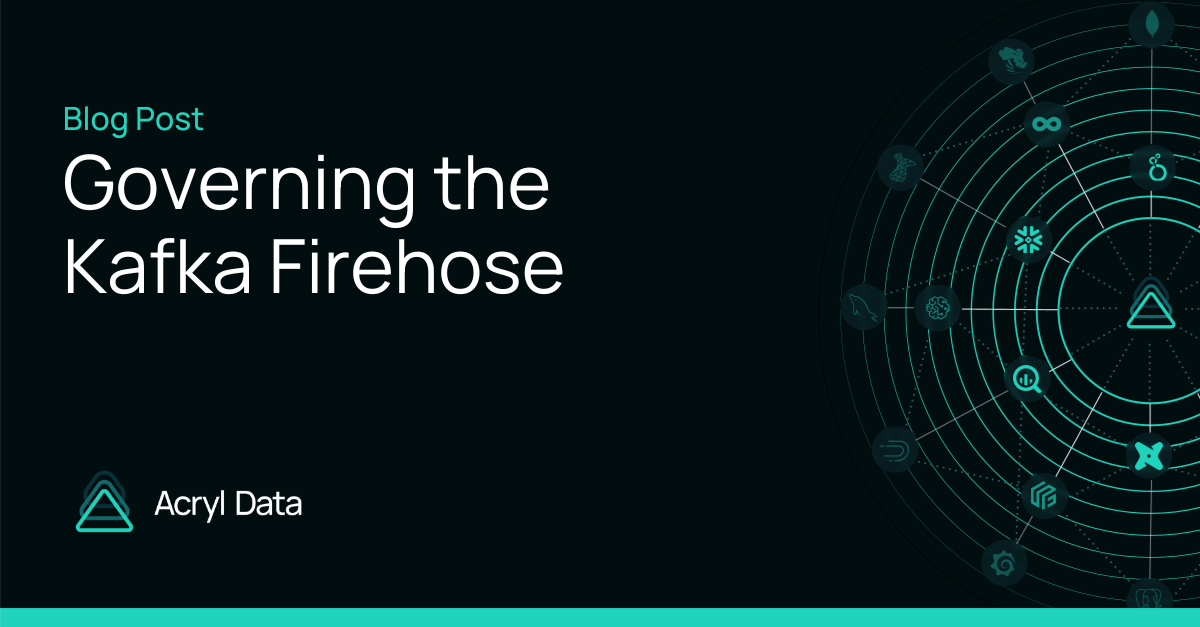Five Signs You Need a Unified Data Observability Solution
Metadata Management
Data Governance
Data Discovery
Compliance
Data Quality
Metadata Management
Data Governance
Data Discovery
Compliance
Data Quality
Metadata Management
Data Governance
Data Discovery
Compliance
Data Quality

NEXT UP

Governing the Kafka Firehose
Kafka’s schema registry and data portal are great, but without a way to actually enforce schema standards across all your upstream apps and services, data breakages are still going to happen. Just as important, without insight into who or what depends on this data, you can’t contain the damage. And, as data teams know, Kafka data breakages almost always cascade far and wide downstream—wrecking not just data pipelines, and not just business-critical products and services, but also any reports, dashboards, or operational analytics that depend on upstream Kafka data.

When Data Quality Fires Break Out, You're Always First to Know with Acryl Observe
Acryl Observe is a complete observability solution offered by Acryl Cloud. It helps you detect data quality issues as soon as they happen so you can address them proactively, rather than waiting for them to impact your business’ operations and services. And it integrates seamlessly with all data warehouses—including Snowflake, BigQuery, Redshift, and Databricks. But Acryl Observe is more than just detection. When data breakages do inevitably occur, it gives you everything you need to assess impact, debug, and resolve them fast; notifying all the right people with real-time status updates along the way.
John Joyce
2024-04-23

Data Quality Should be Part of the Data Catalog - Introducing Acryl Observe
We didn’t go looking for an excuse to develop a data observability solution. There’s more than enough to keep us occupied building the world's best data catalog! ;) But the more experience we gained in working closely with Acryl customers, the clearer it became that data quality, data discovery, and data governance aren’t just complementary, but mutually reinforce one another. Acryl Observe provides data teams with everything they need to detect data breakages immediately, contain their downstream impact, keep stakeholders in the loop, and resolve issues fast—so that data teams can spend less time reacting and more time preventing.
John Joyce
2024-04-16
